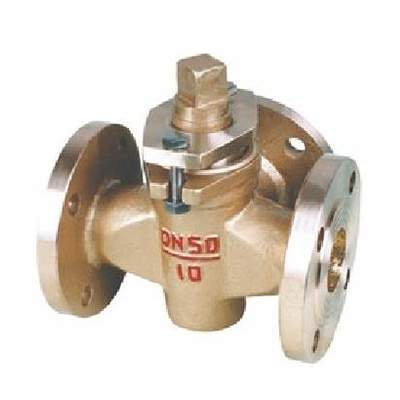Welcome to My Blog!
Before we dive into the content, if you’re interested in our products or have any questions, please feel free to visit our Contact Us page on the website. Our team is ready to assist you with inquiries, orders, or any support you may need.
Now, let’s get started on our journey together. I hope you find the content here insightful, engaging, and valuable.
What is a Plug Valve?

A plug valve is a type of quarter-turn valve commonly used to control the flow of liquids or gases through pipelines. Its design features a cylindrical or conically tapered plug that rotates inside the valve body to open or close the flow passage. The simplicity of its structure makes plug valves highly reliable and suitable for a wide range of industrial applications.
Plug valves are made of various materials, including stainless steel, brass, and carbon steel, allowing them to handle different pressure levels, temperatures, and types of fluids. The key components of a plug valve include the valve body, the plug itself, the stem, and seals or packing material to prevent leakage.
The operation of a plug valve is straightforward: by rotating the plug 90 degrees, the valve transitions between fully open and fully closed positions. Some plug valves allow for partial flow control, while others are designed solely for on/off applications. Understanding the basic function of a plug valve is essential for engineers, technicians, and maintenance personnel who work with fluid systems.
Types of Plug Valves
Plug valves come in multiple types, each designed to suit specific industrial requirements. Understanding the differences is crucial for proper selection.
Lubricated plug valves contain lubrication between the plug and the valve body, which reduces wear and prevents corrosion. They are suitable for applications involving aggressive fluids or high-frequency operation. Non-lubricated plug valves, on the other hand, are maintenance-free but generally require higher operating torque.
Another classification is based on the port design. Full port plug valves offer a straight-through flow path with minimal pressure drop, while reduced port plug valves have a smaller opening, which can reduce flow efficiency but save on material costs.
Material selection also plays a key role. Stainless steel plug valves are highly resistant to corrosion and ideal for chemical and food industry applications. Brass plug valves are commonly used in low-pressure systems, while carbon steel valves are suitable for high-pressure and high-temperature environments.
Advantages of Plug Valves
Plug valves offer several advantages that make them preferred in many industrial applications.
Compared to gate valves, plug valves require less space and can operate more quickly due to their quarter-turn design. Unlike ball valves, plug valves can handle slurries and viscous fluids more effectively because of their simple internal geometry.
Industrial benefits include durability, minimal leakage, and ease of operation. Their compact design is advantageous for systems with limited space. Additionally, plug valves are versatile and can be used in pipelines handling water, oil, gas, chemicals, and steam, making them a cost-effective solution for many industries.
How to Choose the Right Plug Valve
Selecting the appropriate plug valve requires careful consideration of several factors.
Pressure and temperature ratings are critical to ensure the valve can withstand the operating conditions. The type of fluid being handled—whether corrosive, abrasive, or viscous—also influences material choice. Stainless steel is often preferred for corrosive environments, while carbon steel is suitable for high-pressure systems.
Another consideration is operation type. Manual plug valves are simple and reliable, while automatic or actuated valves offer remote control and integration with modern process systems. Choosing between full port and reduced port designs depends on the required flow rate and system efficiency.
Finally, evaluating the manufacturer’s specifications and quality certifications ensures long-term reliability and compliance with industry standards.
Installation and Maintenance of Plug Valves
Proper installation and maintenance are crucial for the longevity and performance of plug valves.
A correct installation starts with ensuring that the valve is aligned with the pipeline and free from debris. For lubricated plug valves, applying the recommended lubricant during installation can prevent early wear. Tightening the packing material properly ensures a leak-free seal.
Routine maintenance includes periodic inspection, cleaning, and lubrication (if applicable). Common issues such as leakage, sticking, or difficulty in turning can often be addressed by cleaning the plug and body, checking the seals, or replacing worn components. Following a structured maintenance schedule reduces downtime and extends the valve’s service life.
Troubleshooting is relatively straightforward. For example, a plug valve that is difficult to operate may need lubrication or minor adjustments, while persistent leakage could indicate worn seals or damage to the plug surface.
Plug Valves in Different Industries
Plug valves are widely used across various industrial sectors due to their reliability and versatility.
In the chemical industry, plug valves handle aggressive and corrosive fluids, where material selection and lubrication are critical. In oil and gas pipelines, plug valves control the flow of crude oil, natural gas, and other hydrocarbons under high pressure and temperature conditions.
They are also essential in high-temperature steam systems, water treatment plants, and power generation facilities. The choice of plug valve depends on industry requirements, fluid type, and system pressure, making them an integral component of industrial fluid management.
Buying and Sourcing Plug Valves

When purchasing plug valves, it is important to consider manufacturer reputation, product specifications, and availability. Top suppliers offer a variety of materials, sizes, and pressure ratings to match different applications.
Buying online provides convenience, but it is essential to verify technical datasheets and certifications to ensure compliance with industry standards. Prices vary depending on size, material, and type, with custom valves available for specialized applications.
Sourcing valves from reputable distributors ensures access to technical support, spare parts, and long-term reliability, which is critical for industrial operations.
Conclusion
Plug valves are versatile, reliable, and essential components in many industrial systems. Understanding their types, advantages, and applications is critical for proper selection, installation, and maintenance.
By choosing the right material, design, and operation type, and by following proper installation and maintenance practices, industries can ensure efficient, safe, and long-lasting performance from their plug valves. For engineers, technicians, and procurement teams, plug valves provide a cost-effective and dependable solution for fluid control in pipelines.
FAQ
What is a plug valve?
A plug valve is a quarter-turn valve that controls fluid flow using a cylindrical or conical plug. It is commonly used in pipelines for liquids and gases.
How does a plug valve work?
The plug rotates 90 degrees inside the valve body to open or close the flow. Some designs allow partial flow control, while others are for on/off operation.
What are the main types of plug valves?
Common types include lubricated vs non-lubricated, full port vs reduced port, and material-based types like stainless steel, brass, and carbon steel.
How do I choose the right plug valve?
Consider factors such as pressure, temperature, fluid type, material, and whether you need manual or automatic operation.
How can I maintain a plug valve?
Regular inspection, cleaning, and lubrication (if applicable) prevent leaks and sticking. Replace worn seals and components as needed.
Need help selecting the right plug valve? Contact our technical experts today for personalized advice and ensure optimal performance for your pipeline system.
